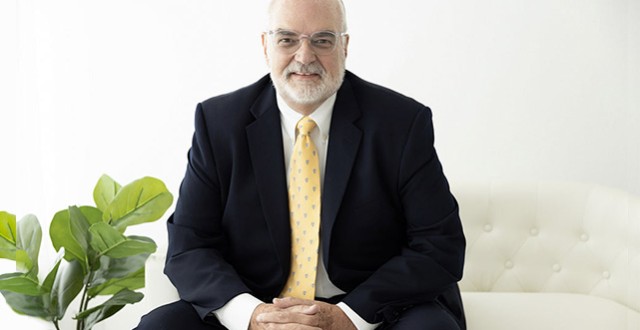
- Mediation
- Arbitration
- Court Neutrals
- Online Dispute Resolution
- Technology
- Court Decisions
- More
- Legislation
- Healthcare
- Guest Posts
- John DeGroote
- John C. Fleming
- Rick Freeman
- Professor Peter Friedman
- Honorable W. Royal Furgeson, Jr.
- James M. Gaitis
- Laura A. Kaster
- Professor John Lande
- Philip J. Loree, Jr.
- Michael McIlwrath
- F. Peter Phillips
- Professor Alan Scott Rau
- Professor Thomas J. Stipanowich
- Professor S.I. Strong
- Richard Webb
- Glen M. Wilkerson
- International arbitration
- Regulation
- Sports and Entertainment
- We’re Back!!!!Well, it’s been a while since we published and that is about to change. Since I spent much of last year becoming
 JAMS Welcomes Karl Bayer to its Panel of NeutralsJAMS, the world’s largest private alternative dispute resolution (ADR) provider, is pleased to announce that Karl Bayer
JAMS Welcomes Karl Bayer to its Panel of NeutralsJAMS, the world’s largest private alternative dispute resolution (ADR) provider, is pleased to announce that Karl Bayer Class Action Waivers in Arbitration Agreements: The Twenty-First Century Arbitration Battleground and Implications for the EU CountriesLinda S. Mullenix, Morris & Rita Atlas Chair in Advocacy at the University of Texas School of Law, has written “Class Ac
Class Action Waivers in Arbitration Agreements: The Twenty-First Century Arbitration Battleground and Implications for the EU CountriesLinda S. Mullenix, Morris & Rita Atlas Chair in Advocacy at the University of Texas School of Law, has written “Class Ac Picking the Proper Technological Tool for Problem-Solving in ArbitrationProfessor Amy J. Schmitz, John Deaver Drinko-Baker & Hostetler Chair in Law and Co-Director of the Translational Data An
Picking the Proper Technological Tool for Problem-Solving in ArbitrationProfessor Amy J. Schmitz, John Deaver Drinko-Baker & Hostetler Chair in Law and Co-Director of the Translational Data An
Recent Posts
Federal Court Orders Mississippi Nursing Home Neglect Case to Arbitration Based on Resident’s Verbal Consent to Daughter’s Agency
The United States District Court for the Northern District of Mississippi has ordered a nursing home dispute to arbitration based on an individual’s oral consent to her daughter’s agency.
Continue reading...SCOTUS Rules in Epic Systems: What It Means for Securities Arbitration
George Friedman, Adjunct Professor of Law at Fordham University School of Law, has published “SCOTUS Rules in Epic Systems: What It Means for Securities Arbitration,” Securities Arbitration Commentator, Vol. 2018, No. 3.
Continue reading...Federal Judge Refuses to Enforce AT&T’s Arbitration Policy Against Former Employee
A federal judge has denied an employer’s motion to compel arbitration in a gender and race discrimination case. In AT&T Mobility Services, LLC v. Francesca Jean-Baptiste, No. 17-11962 (July 13, 2018), a woman, Jean-Baptiste, worked as an Assistant Store Manager at an AT&T store in New Jersey.
Continue reading...A Short Defense of Southland, Casarotto, and Other Long-Controversial Arbitration Decisions
University of Kansas School of Law Professor Stephen J. Ware has published “A Short Defense of Southland, Casarotto, and Other Long-Controversial Arbitration Decisions,” Loyola Consumer Law Review, Vol. 30, No. 3, 2018.
Continue reading...Arbitration
The Supreme Court of Texas has declined to consider a man’s claim that his defamation case against Baylor University, the school’s President, regents, and legal counsel should be arbitrated.
Continue reading...Mediation
Via Court ADR Connection we learned of “Michigan Mediates!” a statewide mediation program launched recently by the State Bar of Michigan, ADR Section. The goal of Michigan Mediates! is to elevate awareness and use of mediation as a practical and cost-effective tool to help solve many of the complex problems plaguing government agencies, schools and communities. Michigan Mediates! will include state-wide trainings, public service announcements, and collaboration with grass roots partners including the 20 community dispute resolution centers throughout the state, the Michigan Supreme Court State Court Administrative Office, school districts, police departments, government agencies, and faith-based organizations. To learn more about the campaign, check out this press release. The program’s website (currently under construction) is here.
Continue reading...Healthcare Disputes
Addressing Disruptive Behavior in Health Care
By Holly Hayes Recently, I had the privilege of hearing Robert Wachter, MD speak. He is the Professor and Associate Chairman of the Department of Medicine at the University of California, San Francisco and an expert in the field of patient safety. He spoke about The Joint Commission’s (TJC) recent change in focus, from Safety Goals of the past that included “avoid using high risk abbreviations (those that could have two meanings)” to the Safety Goals of the present, for example, “better leadership” and “dealing with disruptive physicians”. Dr. Wachter applauds TJC shift, but believes it is difficult to regulate the new safety goals that focus more on the “culture” of an organization. Disruptive behavior has been the topic of two of our blog posts, read more here and here. Dr. Wachter, who is also Editor of the Agency for Healthcare Research and Quality (AHRQ) Morbidity and Mortality (M&M) Rounds on the web interviewed Gerald B. Hickson, MD, one of the world’s leading experts on physician behavior and its connection to clinical outcomes. Read the full interview or listen to the podcast here. Dr. Hickson stated, research has been done examining factors contributing to adverse outcomes, the link between poor communication skills and poor outcomes is clear. When medical team members don’t play well together—sometimes because a physician engages in disruptive behavior—we are more likely to fail to achieve our intended outcomes and therefore experience more errors. The Joint Commission sentinel event alert, Behaviors That Undermine a Culture of Safety, helped focus attention on the impact of nonprofessional conduct and the need for hospitals to have a plan. But at the end of the day, it is still about local leadership. This is what we refer to as the question of implicit versus explicit culture. It is also about developing a process, establishing a surveillance system, using a tiered intervention strategy, training individuals to deliver the message, and providing the appropriate resources to help those who are identified. The Joint Commission alert reminds us that we need to address a challenge, not simply write a new conduct policy so we can pass a review. To address nonprofessional conduct, we use a ‘disruptive behavior pyramid’ to help us match circumstances with the appropriate level of intervention. The pyramid is based on a foundational concept that the vast majority of team members never demonstrate any disruptive behaviors. That’s important because when leaders are beginning to contemplate addressing the challenge of disruptive behavior, they need to understand that the vast majority of people who walk in the door are outstanding. In fact, we honor outstanding colleagues by addressing colleagues who need a little help. Therefore, whenever an ‘event’ is reported, we recognize that there may be two sides to the story. Sometimes patients have encounters when they believe providers responded in nonprofessional ways. Whenever possible, physicians need to have those events brought to their attention through an informal ‘cup of coffee’ process. It’s not a control contest. It’s simply a way for a medical group to say, ‘We want you to know what the patient shared.’ The individual physician involved needs to understand that the complaint is based on the patient’s perception, which may or may not have merit, and we want the provider to know. The problem is that when an event occurs, does it represent an anomaly or just one more event that identifies a pattern of disruptive behavior? We believe that patients and other members of the health care team serve an important surveillance role. Their eyes and ears are incredibly effective in identifying problems if organizations are committed to listening, recording observations, and looking for patterns. Once a pattern is suspected, there needs to be action. So as an example, at Vanderbilt we routinely code all unsolicited complaint reports and assign the complaints to 34 categories. The complaints are aggregated, and those physicians with more than their fair share receive a letter requesting a visit with a trained peer messenger. ‘Bob, for whatever reason, you seem to be associated with more complaints than the vast majority of your colleagues. I’m not here to ascertain why. My goal is not to tell you what to do, but suggest that you review the material I am sharing with you and reflect on what families are saying about your practice. Furthermore, follow-up will occur in a defined number of months.’ The process needs to be fair and apply to all members of the team. In addition, we believe that messages about patterns should be delivered by a trained physician peer messenger. One mark of a profession is its self-regulating entity. One way we demonstrate our commitment to our profession is to sit down and share with our high-risk colleagues. The peer messenger is able to say, “Good colleague, 50% of our physicians don’t get any complaints. Some get an occasional complaint. But, Bob, you get more complaints than 95% of all our colleagues, and I thought you would want to know.’ There needs to be a written plan to define expectations for the high-risk physician, what the identified deficiencies are, what interventions will occur, how success will be measured, and what the consequences are for failure to respond. We welcome your comments on addressing disruptive behavior in health care. Holly Hayes is a mediator at Karl Bayer, Dispute Resolution Expert where she focuses on mediation of health care disputes. Holly holds a B.A. from Southern Methodist University and a Masters in Health Administration from Duke University. She can be reached at: holly@karlbayer.com.
Continue reading...Operations Management Approach to Conflict in Organizations
By Holly Hayes Last week, I had the opportunity to attend the University of Texas “Innovation in Health Care Delivery Systems: Maintaining Quality and Reducing Costs Through Management and Information Technology”. One breakout session featured Donde Plowman, Ph.d., Business Professor and Department Head from the University of Tennessee. She has recently undertaken a study to increase the relevance of health services research to leaders in the health field. She asked health care CEOs for their general impressions of the current state of health services research and they responded as follows: 1. You don’t research what we care about. 2. Your models are too simple. 3. Your models are too general. Dr. Plowman then asked, what do you care about? The CEOs responded: staffing, evidence-based medicine, information technology, data/benchmarking, trust building, communication and leadership. Dr. Plowman focused on leadership stating it is more of a “behavior than a role and more of a process than a person”. She spoke about the opportunity leaders have to create organizations where innovation can occur. One aspect of innovation in organizations, she believes, is the presence of conflict. So often, leaders are responsible for reducing conflict, but Dr. Plowman argues, conflict is often where innovation comes from. She states, perhaps conflict in the organization means there is life in the organization. For more on Dr. Plowman’s research on how organizations change, read here. Dr. Plowman’s presentation prompted me to think about the role of conflict in organizations. Physician Executive magazine published the “Conflict management checklist: a diagnostic tool for assessing conflict in organizations”. See the full article here. The article agrees with Dr. Plowman’s assessment and says: “Depending on how the conflict is managed, the experience can be growth enhancing for the individuals involved or it can be destructive to relationships and self esteem. Conflict well managed can tap the creativity and problem-solving skills of colleagues, taking advantage of different gender, cultural, and role perspectives to create mutually beneficial solutions. Conflict poorly managed or consistently avoided reduces productivity, undermines trust, and may spawn additional conflict.” THE CONFLICT MANAGEMENT CHECKLIST is summarized: I. Identify the critical information: A. Define the conflict situation B. Organization factors C. Personal factors II Ask yourself these questions: A. Whose problem is this? B. How does my behavior contribute to the dynamics of the conflict? C. What elements of the situation am I able and willing to change? D. What are the time and resource constraints? E. What matters most to me/to the other party in this situation? F. What is at stake for me/for the other party in this situation? III Steps to facilitate your personal effectiveness in a direct approach to the conflict situation: A. Focus on issues relevant to the situation B. Define the situation in terms of a problem that calls for a solution, not as a threat that calls for attack C. Acknowledge feelings D. Ask for specific behavior change E. Identify what you are willing to do in the situation Let us hear your thoughts on the role of conflict in organizations. For more on this topic, see our series on conflict resolution in health care here (Part I, II, III, IV, and V). Holly Hayes is a mediator at Karl Bayer, Dispute Resolution Expert where she focuses on mediation of health care disputes. Holly holds a B.A. from Southern Methodist University and a Masters in Health Administration from Duke University. She can be reached at: holly@karlbayer.com.
Continue reading...Legal Research
About Disputing
Disputing is published by Karl Bayer, a dispute resolution expert based in Austin, Texas. Articles published on Disputing aim to provide original insight and commentary around issues related to arbitration, mediation and the alternative dispute resolution industry.
To learn more about Karl and his team, or to schedule a mediation or arbitration with Karl’s live scheduling calendar, visit www.karlbayer.com.













